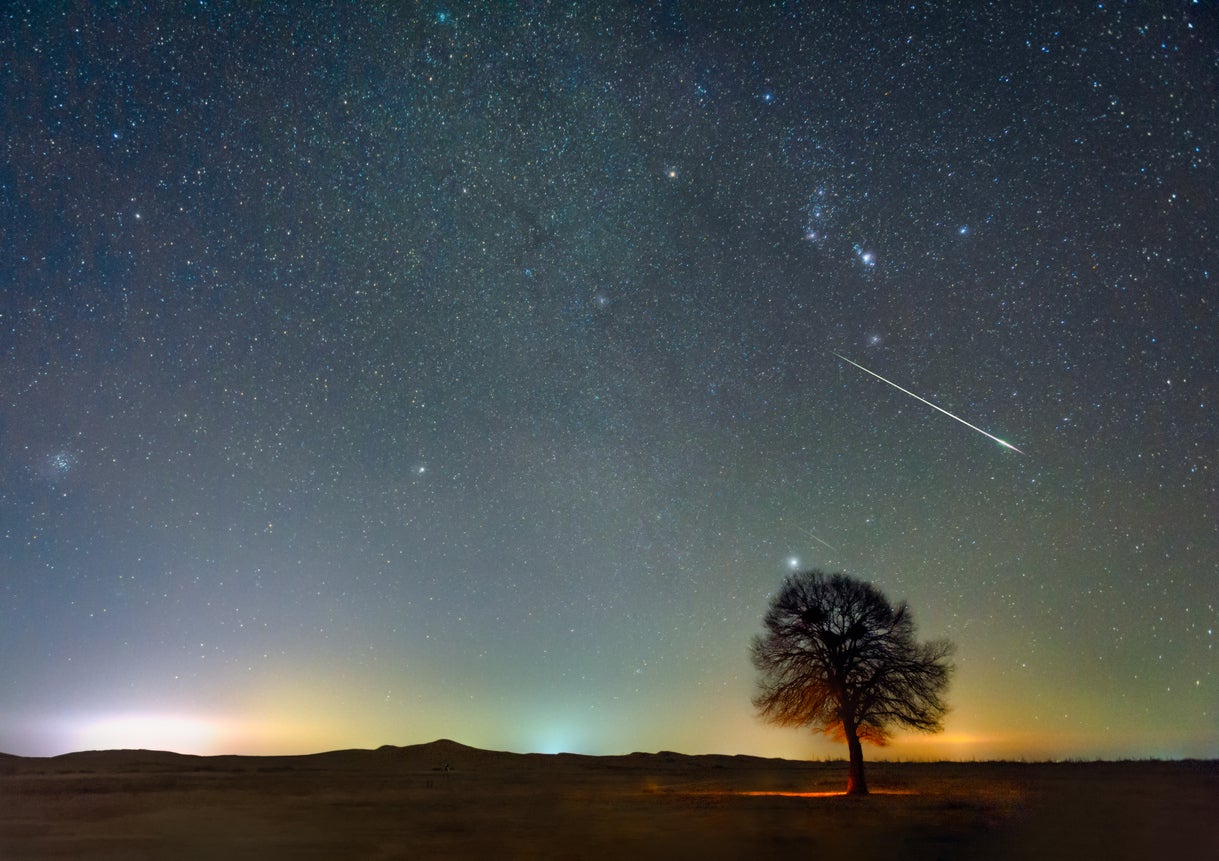One of the most intense displays of ‘shooting stars’ will light up the sky this week
Geminids are ‘one of the best and most reliable annual meteor showers of the year’, Nasa says, with up to 120 shooting stars appearing per hour
Your support helps us to tell the story
From reproductive rights to climate change to Big Tech, The Independent is on the ground when the story is developing. Whether it's investigating the financials of Elon Musk's pro-Trump PAC or producing our latest documentary, 'The A Word', which shines a light on the American women fighting for reproductive rights, we know how important it is to parse out the facts from the messaging.
At such a critical moment in US history, we need reporters on the ground. Your donation allows us to keep sending journalists to speak to both sides of the story.
The Independent is trusted by Americans across the entire political spectrum. And unlike many other quality news outlets, we choose not to lock Americans out of our reporting and analysis with paywalls. We believe quality journalism should be available to everyone, paid for by those who can afford it.
Your support makes all the difference.One of the most intense displays of ‘shooting stars’ is underway, as the Geminid meteor shower begins building towards its December peak.
The annual celestial spectacle is one of the best opportunities of the year to see a meteor shower, with more than 100 meteors an hour visible with the naked eye under perfect viewing conditions.
The Geminids will last until 24 December 2023, with peak meteor activity taking place on the night of 13-14 December.
Until recently, the origins of the Geminid meteor shower were shrouded in mystery, as unlike most other meteor showers they come from an asteroid rather than a comet.
Asteroids typically do not leave a tail of ice and dust like comets, which cause the shooting stars as they burn through the Earth’s atmosphere.
Earlier this year, scientists discovered that the Geminid meteor shower began in a “violent catastrophe”, such as a high-speed collision or gaseous explosion, which created the trail.

Nasa describes the Geminids as “one of the best and most reliable annual meteor showers of the year”, with up to 120 Geminid meteors appearing per hour in perfect conditions.
“The Geminids are best viewed during the night and predawn hours and are visible across the globe due to a nearly 24-hour broad maximum,” the US space agency notes on its website.
“This shower is considered one of the best opportunities for young viewers since this shower starts around 9 or 10pm. To view the Geminids, find an area well away from the city lights or street lights. Come prepared for winter temperatures with a sleeping bag, blanket, or lawn chair.
“Lie flat on your back with your feet facing south and look up, taking in as much of the sky as possible. After about 30 minutes in the dark, your eyes will adapt and you will begin to see meteors. Be patient – the show will last until dawn, so you have plenty of time to catch a glimpse.”
Weather conditions in the UK are not ideal this week, though Friday evening will see clouds disappear completely for several hours across the country, according to the Met Office.

Join our commenting forum
Join thought-provoking conversations, follow other Independent readers and see their replies
Comments